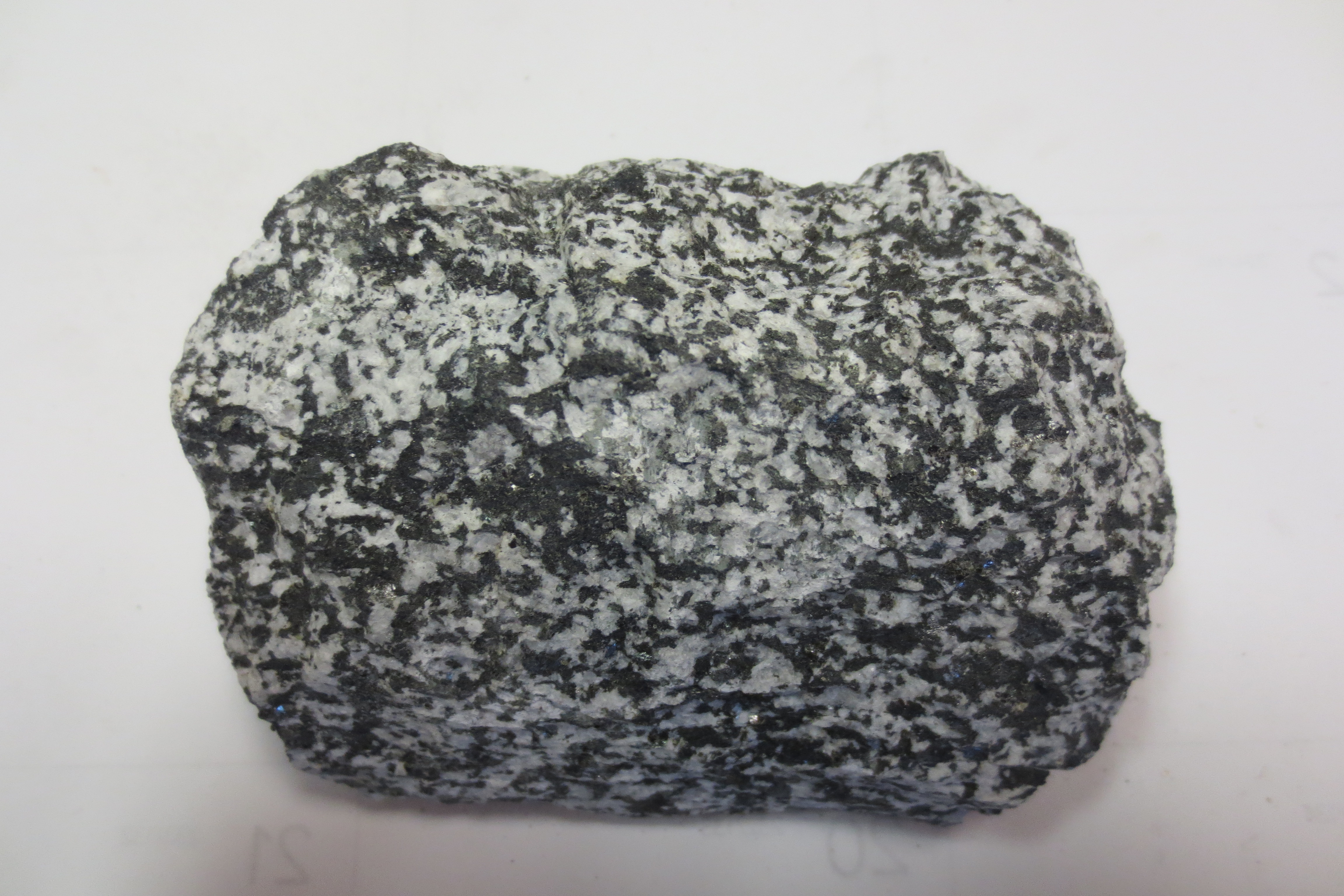Phaneritic Rocks on:
[Wikipedia]
[Google]
[Amazon]

 A phanerite is an
A phanerite is an

igneous rock
Igneous rock ( ), or magmatic rock, is one of the three main rock types, the others being sedimentary and metamorphic. Igneous rocks are formed through the cooling and solidification of magma or lava.
The magma can be derived from partial ...
whose microstructure is made up of crystal
A crystal or crystalline solid is a solid material whose constituents (such as atoms, molecules, or ions) are arranged in a highly ordered microscopic structure, forming a crystal lattice that extends in all directions. In addition, macros ...
s large enough to be distinguished with the unaided human eye
The human eye is a sensory organ in the visual system that reacts to light, visible light allowing eyesight. Other functions include maintaining the circadian rhythm, and Balance (ability), keeping balance.
The eye can be considered as a living ...
. In contrast, the crystals in an aphanitic
Aphanites (adj. ''aphanitic''; ) are igneous rocks that are so fine-grained that their component mineral crystals are not visible to the naked eye (in contrast to phanerites, in which the crystals are visible to the unaided eye). This geo ...
rock are too fine-grained to be identifiable. Phaneritic texture
Texture may refer to:
Science and technology
* Image texture, the spatial arrangement of color or intensities in an image
* Surface texture, the smoothness, roughness, or bumpiness of the surface of an object
* Texture (roads), road surface c ...
forms when magma
Magma () is the molten or semi-molten natural material from which all igneous rocks are formed. Magma (sometimes colloquially but incorrectly referred to as ''lava'') is found beneath the surface of the Earth, and evidence of magmatism has also ...
deep underground in the plutonic environment cools slowly, giving the crystals time to grow.
Phanerites are often described as '' coarse-grained'' or '' macroscopically crystalline''.
References
Phaneritic rocks Petrology {{Petrology-stub